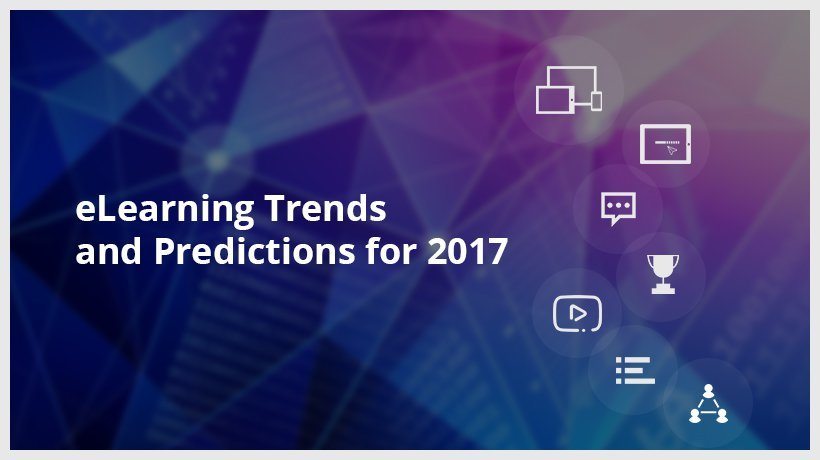What To Expect From Social Learning In 2017
Companies all over the world have now embraced the practical application of social learning theory because it has proven itself to be tremendously effective over and over again. Millennials are now the largest generation in the global workforce and this brings a number of unique changes to the way organizations are training their personnel. The days of classroom lectures in a corporate environment are dying and they are giving way to newer and much more effective systems, like social learning. Here is what to expect from social learning in 2017:
1. Massive Growth In Gamification
Millennials grew up with access to more games than any other group of humans on the planet. At any given moment you can be playing chess on your phone with your friend in another country while simultaneously playing word games with your mother in another state.
But what does this have to do with learning in a corporate environment?
Games make learning fun. Language learning programs have known this for a long time and that's why some of the most successful applications like Duolingo and Babbel revolve around games. When you add in the social element to games then the competition promotes a higher degree of focus and this means that training materials delivered in a game can be retained much easier. Some resources suggest that the current “gamification” industry of eLearning has surpassed $3 billion in this last year alone, and 2017 will certainly see that number rise.
2. More Programs Will Embrace Microlearning
Microlearning is the process of breaking educational materials and content down into smaller “chunks” that are easy to access in our fast-paced work environment. Very few people are able to block off an hour in their day to study compliance materials, for example. However, it's much more feasible to set aside 10 minutes a day after lunch to study the materials.
This means that course designers are now creating shorter length videos, highly focused reports, and similar materials that can be consumed in a far shorter amount of time. This area is open to a great degree of innovation and 2017 will see many more organizations embracing the Microlearning model, if only for the reason that we now have the data to back up its effectiveness.
3. Open Educational Resources (OER) Will Become More Sophisticated
MIT was a trailblazer when it they announced their Open Courseware program several years ago. Today that platform of providing free study materials written by leading experts has been embraced all over the world. Leading minds in the academic and corporate sectors have learned that creating Open Educational Resources is an extremely effective way to build a following and get your message out to the public. After all, who doesn't love free?
The open source model has long been a path to innovation in the software sector and now we are seeing the same type of cutting-edge advancement being applied to the corporate educational model as well.
Everything from sales to customer service and compliance can be studied online through free resources that are written by world-class experts. It has now become more cost-effective than ever to create and deliver this educational material, and this means that we will see many more resources going into development of free training in the next year.
4. Big Data Will Be More Important Than Ever
Executives and investors look at the numbers; that's no secret. However, we are now entering an age where we can track more metrics in our businesses than ever before. This provides us with unique opportunities to evaluate and restructure programs to maximize effectiveness and efficiency.
Learning and Development departments, for example, can use this information to develop tremendously powerful learning platforms that boost productivity, help improve employee retention, and promote overall job satisfaction.
2017 is without a doubt going to be a year of Big Data.
5. Social Learning Tools Will Become More Sophisticated
Right now learners are collaborating using popular social media platforms like Facebook and Google+, as well as proprietary systems developed by companies in-house. After all, it’s easy to participate in a Skype chat or add your remarks to a Google document or Facebook group. However, we have only begun to see the true application potential of social learning tools. As the costs of developing these tools continues to go down, we will be seeing much more customizable systems that are built for specific industries and departments.
6. Learning Management Systems Will Continue To Evolve At A Breakneck Speed
Now that we have so much data to back up the effectiveness of the eLearning sector, we will certainly see the growth in Learning Management System development and implementation. Experts have predicted that the Learning Management System industry will grow to $8 billion by 2018. This presents several opportunities for companies to improve their training processes and overall employee satisfaction.
7. Mobile Will Dominate
Mobile learning is a huge part of the social learning experience. Training programs can now be delivered to mobile devices wherever you are on the planet. This is also being integrated with cutting edge systems like wearable tech and Geo-Location to take us even further into the future. According to research by Global Workplace Analytics, employees are now spending less than 50% of their scheduled workday at their desk. This is just one reason why mobile learning is going to be more important than ever in 2017.
Social learning is no longer a theory about the future—it’s a practical understanding of the way we are learning today. If you want your organization to be ahead of the curve, then you’ll keep an eye on opportunities in this sphere in the next 12 months.









